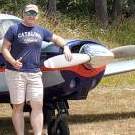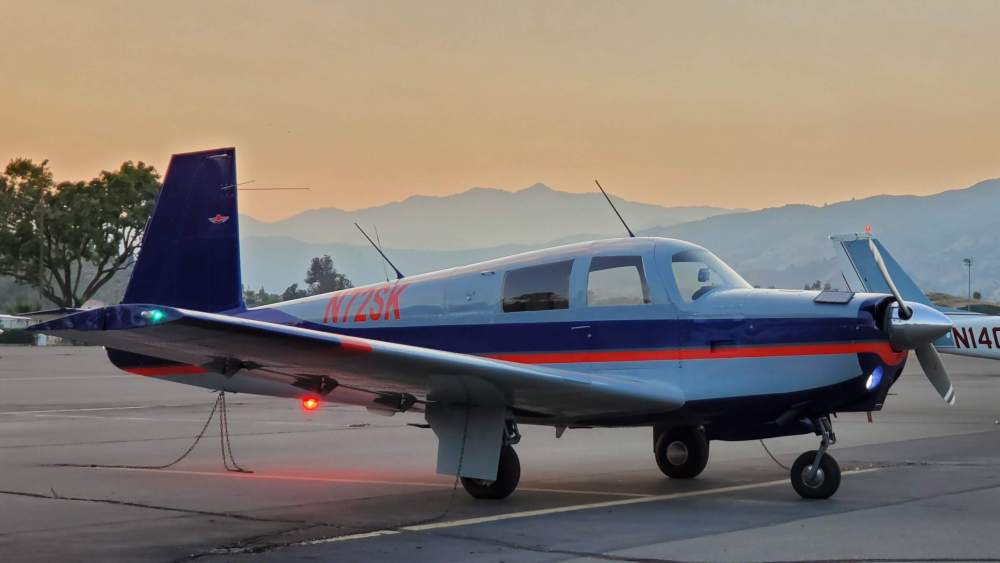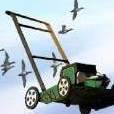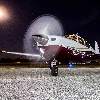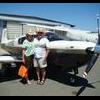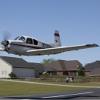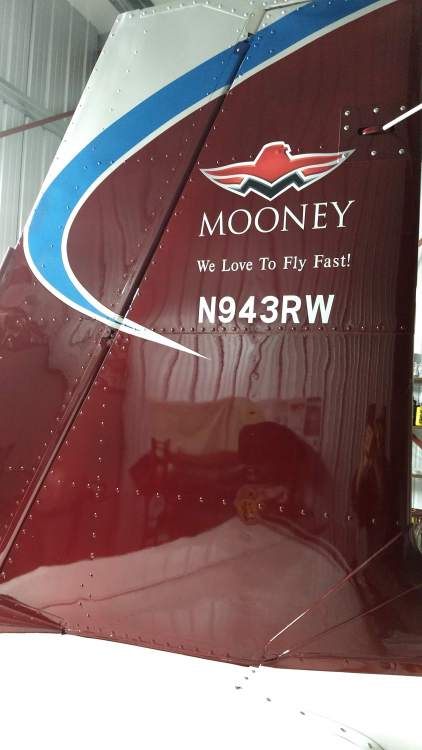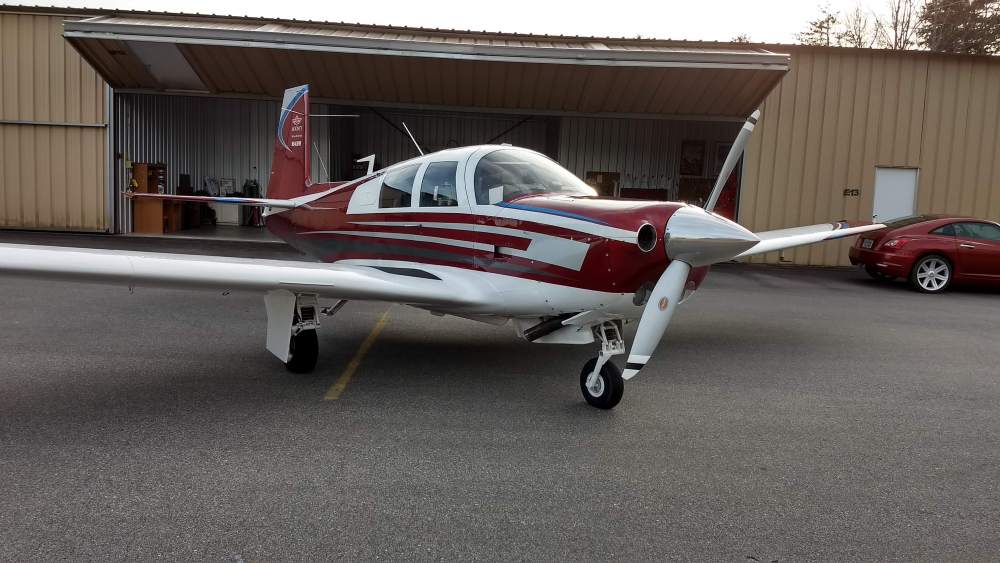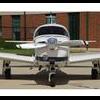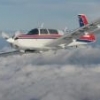Leaderboard
Popular Content
Showing content with the highest reputation on 06/23/2019 in all areas
-
Flush $10k down the toilet. If you're willing to open up your septic tank and fish around for it, you're a CB Mooney owner.8 points
-
8 points
-
Well, I had two Mooneys before I bought a PA46. Then I bought a nice Ovation, and replaced that with yet another PA46. I won’t hold forth as an overall expert on the piston PA46 as both of mine have been turbine. But from the firewall aft the PA46 family has common structures. The aircraft was a clean sheet design optimized to fly at 20,000’ at 200 knots burning 14 GPH at LOP. In my opinion the airframe designers met their goal well. The airframe costs are comparable to long body Mooney costs. FIKI costs whether via boots or TKS. Pressurization system costs seem low. Avionics are equivalent, except the PA46 Mirage usually has a weather radar to care for. Both the piston versions have their staunch supporters. There is an STC to place an upgraded Continental TSIO-550 into the Malibu (PA46-310P) version. Care and feeding is about the same as for a turbocharged Bravo or Acclaim, from what I hear. To wit, lots of care and feeding is needed. The PA46 is heavier and you tend to fly it higher than a turbocharged Mooney so the piston engine works harder. With no cowl flap adjustment you have airspeed and gasoline for cooling. At FL250 in a Mirage I found it frequently took several additional GPH for cooling compared to best power ROP. To cruise higher you spend more time climbing. The POH says to expect 1,000 FPM but reasonable CHTs demand more like 500 FPM cruise climb so you are at about 35 GPH for 45 minutes to get to the lower FL. The plane handling is good in the air. It is a comfortable ride, passengers like the cabin. The piston types with 120 gallon tanks standard (140 optional) have great range and endurance. Yes, if you can’t stand a $10,000 bill now and then a PA46 is a risky tool. The Mirage pilot’s windshield is a perfect example: The heated PPG glass windscreen can fail the annual inspection heater current test and a replacement is around $30K. The turbine engine is expensive to buy but cheaper to maintain than the piston types. But that’s a different tale.5 points
-
5 points
-
A generator with a modern voltage regulator is much better than when paired with the original Delco voltage regulator. The new regulator box installation is simple. An alternator conversion is better yet, but it is an involved conversion. I elected to overhaul the generator and add the Zeftronics regulator to my C model.5 points
-
The JetProp will reach FL200 in 10 minutes, FL270 in 6 more. I too don’t relish a 45 minute climb. Perhaps buy a used JetA refueller and leave it on the airport; a distributor will tanker it to you and in 2,500 gallon batches it’s surprisingly cheap. Cheerio4 points
-
Who’s septic tank has $10K cash it it?!?!??? Dammit man, give me the address, I’m on my way!4 points
-
This reminds me of one of my favorite quotes - don't recall the original author. "Go to your bank, take out $10,000 in cash, and flush it down the toilet. If this bothers you, you can't afford a turbine-powered aircraft."4 points
-
My 74 M20F was imported into Canada in 1978. I purchased it without the US log book, and wondered who owned the aircraft previously. Turns out, the US FAA has a kick arse database, and allows you to search. Managed to find the name of the first owner: https://en.m.wikipedia.org/wiki/Earle_E._Partridge I’ve found myself humbled that an Air Force General took out a loan in 1974 to buy a Mooney as a retirement toy!3 points
-
Well i finally got a chance to mess with the airplane yesterday. Got the oil pressure back to normal by replacing the spring and ball inside the oil pressure regulator. Check all oil hoses for clogs and found nothing, removed the thermostatic bypass valve and clean it, there was some carbon inside it but not much.Functionally checked the valve by putting it in boiling water and it worked like it supposed to. Clean it really good again to get rid of all the water and re installed. Did a leak check. Ran the engine @ 2000 RPM did all checks to get the oil flowing and then i let it run at 1000 RPM for 20 minutes and i was really please with the result. Here’s some pictures. Hope this helps someone now or in the future. New spring on the left. New ball on the right Sent from my iPhone using Tapatalk3 points
-
3 points
-
Since I'm planning to fly back to MA after AirVenture by way of MT, NV, UT, WY, CO, etc. I thought I ought to see how well my old E would climb above 11,000' which is normally as high as I have reason to go traveling East of the Rockies. Maybe this info is useful to others. I took off from MRN (1270') mid day. OAT was 28C (82F) on the ground and 8C (56F) at 13k GPS alt. (You'l recall that standard temp at sea level is 15C with a 2C per 1000' lapse rate which would equate to about 13C at field elev and -9C at 13k so today in NC was well above std.) I climbed at full throttle, 2600 RPM. Just me and 1/2 fuel on board, about 550# below gross. From 9000' to 12,000' it took just under 6 minutes for an average of 500 fpm. (From 12k to 13k took 1:45 = 571 fpm.) At 13k and 2600 rpm I was pulling 19.1" MAP and EDM calculated that is 60% HP. I pulled blue knob to 2350 rpm and red knob to 8.0 gph which was 55%. In hindsight I could have reduced FF further without losing power. Or I could have stayed at 2600 rpm and 60% power.2 points
-
My annual is due in August. So at some point during the month it will go back to SWTA in Texas for that work. While it's there it will get an Aspen MFD and both upgraded to MAX.2 points
-
I was waiting for that. ..I did register on it today, but it was not as helpful as this forum for opinions and honest feedback. Still going through it though.2 points
-
2 points
-
I had about the same performance as Bob started this thread with in my 67E. I spent about 16 months flying in and around Reno (4,415' field elevation) and had no problems. If flying IFR, ask for a block altitude and ride the up and down drafts. I found the airspeed swings a little to concerning sometimes between Salt Lake City and Reno to try and maintain assigned altitudes. ATC generally didn't have any issues giving me a 2,000' block with me sandwiched in the middle. I've found the Appalachian chain to be more foothills than true mountains after flying out west for just over two years.... I mean come on, Mt Mitchell in NC is only 6,685' and that's the tallest point east of the Mississippi......Donner Pass on I-80 crosses at 7,000 feet, in a car.... Having said that, the wave action and weather can be just as treacherous in eaither place if you're not watching out for it. Best time to fly is generally in the morning before 1100. I stayed on the ground if wind speeds got above 30 knots across the ridge lines. Also, don't forget to adjust the mixture before take off at the higher elevations. I generally pulled the red knob out about 1 knuckle's worth on my index finger when taking off from Reno. If density Altitude is really high, pull it out a smidge further and listen to the engine, it'll tell you if you're too rich or too lean. Each engine will be different, so that is just general guidance. Going to Sedona is a fairly easy trip with great scenery. The route I used along the northern parts of the Rockies followed V6 for the most part. Didn't have to go above 12,000 except to cross into Salt Lake City near Ogden, UT. You could fly west comfortably at 8,000' from there following I-80 or lower in some places. Mostly open desert out that way with few trees. Couple of posts I did going both directions: Cheers, Brian2 points
-
If you have a couple of hundred bucks, or two amu... If you are just trying to get by on this one, or this is your forever-plane.... +1 OH or swap Generator (aircraft Spruce) +1 Zeftronics controller Start with the controller if the generator is still working. The original controller is so stone simple, it just doesn’t work that well... adjusting the output correctly is a bit challenging... New controllers come with LED outputs that can be wired to the instrument panel. Nice to have a heads up when the charging system isn’t working as expected... bolt on, wire up... no adjustments... My 65C got these updates back in the day... after a mis-adjusted sticks, stones and springs, voltage regulator melted all the solder out of the generator... See if you can find a voltage vs. rpm chart for your generator... or a voltage indicator for your instrument panel to know when your system is charging or not... you may need 1700 rpm before a significant amount of juice is being generated... long time idling on the ground may be draining your battery, with the short burst of charging not covering the need... Sometimes the load on the system is quite large... how many lights, radios, and coffee makers are you running in the cabin? Swapping the landing light for an LED unit may be helpful... Then there is the storage of all these excess electrons... check the storage capacity of the battery, it may be getting low... PP thoughts only, not a mechanic... Best regards, -a-2 points
-
Yeah, I'm another Easterner. On @kpaul's recommendation I plan a circuit over Yellowstone NP landmarks. That will need to be at about 12,000 to stay above the minimum 2000 AGL. I do have a lot of experience flying on the lee side of our highest in the East Appalachian Mountains where vertical drafts can exceed a Mooney's ability to climb. I'll be watching the winds carefully.2 points
-
2 points
-
Expect that water proofing something would require displacement... put WD40 on it... the water gets displaced, beads up and rolls away... the displacing material can work without washing away for a long time... Dispersion is more like improving mixing and dissolving... like using soap to disperse oil in water... oil was happy floating on top... but got dissolved and spread out, dispersing everywhere... the dispersant gets used up while it works... The chemistry of soap is interesting... hydrophilic on one end, hydrophobic on the other end of the same molecule... one end likes water, the other end likes oil... Try using this in conversation at work... Best regards, -a-2 points
-
2 points
-
The beauty of it is typified by how I learned it. I was a wet behind the ears CFI doing a 172 checkout for a retired airline pilot with 20 gazillion hours. When I pulled the power he looked out the window, pitched for level flight visually, found a place and headed for it. Never even looked inside the cockpit - to troubleshoot - until after he was heading to his chosen landing area, already at best glide. No playing around. Heading to the landing area at best glide within about 6 seconds. Compare that to the too typical "hunting" for best glide while valuable seconds tick away. its become a staple. Both personally (and I have had a power loss in the clouds) and when teaching. (Don't worry. I managed to teach him something too :D, but the lesson I learned was better)2 points
-
I didn't look at the spreadsheet but you might as well key the formula into it. But here's a shortcut when flying - normal cruise pitch will produce best glide within about 5 KTS. So, in the clouds, just put the airplane on the AI horizon line. True in all 30+ single makes/models I have flown.2 points
-
We at Mooney space should make this guy who pulled the pilot out of the plane a nice trophy and crown him the first Mooneyspace hero of the year!2 points
-
Yip, if I compare this to Don Kaye's experience with the GFC500 thus far it's a very clear favorite too. If I had an STEC I would sign today, but my Century2000 is working fine for the time being.1 point
-
1 point
-
I installed the AV-20-S. Here are the pluses. It can display OAT, buss voltage, and TAS on the main screen. I agree with @gsxrpilot that the timers are nice. It has two user timers, plus an "engine run time" timer that starts counting when the buss voltage exceeds 13-ish V, which occurs during runup in a/c with generators. It also has a "flight time timer" that starts when it thinks the pressure differential across the pitot and static lines is enough for 40 kias. I use that one to time when I switch fuel tanks. It also has a mems-based attitude indicator that I find to be well in agreement with my vacuum driven one. I bought it for that feature because a good timer with a backup AI is cool. On the other hand, in the less-than-cool category, it has an OAT sensor that uses the DAVTRON temperature probe. It is calibrated using a menu-based "trim" setting. When I calibrate the temperature probe vs. whatever temperature source I can obtain at altitude, it seems consistent. But, when I compare the indicated TAS vs what the Garmin 430W tells me is the TAS when I change the temperature, pressure, and CAS on that menu, the AV-20-S indicates 4-6 kts higher. The Garmin 430W agrees with three-course groundspeed method of making TAS measurements within about 2 kts. So, whatever algorithm the AV-20-S is using is not that accurate. I have found that I can adjust the temperature "trim" setting to get the TAS to match, and then the temperature is off. Something is not right in the TAS calculation based on the air temperature. It advertises having a "probeless AoA sensor". In my experience, the probeless AOA indication on the AV-20-S is useless. In theory it should work at 1g based on measured V, dP/dt and nose angle relative to the horizon based on the mems AI. However, as g deviates significantly from 1.0, due to turning or some other acceleration, another variable is introduced to the equation that the probeless AOA sensor cannot resolve related to angular accelerations. I contacted the company and was told something to the effect that the probeless AOA has not yet been calibrated in a Mooney. I think that was a polite way of saying "fuhgeddabouddit", so I have. I turned it off because it was distracting. It has the ability to serve as a g-meter, but since I don't do aerobatics and I know to fly in the green arc when it is rough, I don't ever use it. My 2-cents worth. I'm glad I have it for the useful timers and backup AI with 30-minute battery life. The other functionality is of questionable utility in my opinion as a rank private pilot. YMMV. I do not recommend it for its purported ability to accurately indicate AOA.1 point
-
Not impossible, just hard to find. They come up rarely. I bought some with a complete salvage plane. but I'm weird that way. Sent from my LG-US996 using Tapatalk1 point
-
Thanks for sharing this. Wife and I have a week booked in Sedona in Oct. Was curious about MEAs and my E. Should be interesting for this flatlander out there. Sent from my SM-G930V using Tapatalk1 point
-
KCUT to KDUB would be ok as long as the winds from the west were not too high. With DUB being just east of the mountains turbulence could be pretty bad. The trip from DUB to WYS...you would need to spiral climb to 12000' MSL to clear the mountains. If there is any weather at all, DUB does not have any approaches, a 7300 MSL runway with a note about non-standard traffic patterns due to terrain. With conservative planning, good weather, and a little mountain flying experience it is doable.1 point
-
1 point
-
Good thing I never had to buy one of your well sorted, well maintained, but slow planes. If you can’t keep up with MS you are well off the pace. (As I type this in rearranging my portfolio to make sure I’m ready to buy when you get bored with the p46t.)1 point
-
1 point
-
1 point
-
1 point
-
At 10,000ft I’d say you're doing just fine. It’s an NA airplane. It’s going to be fastest at ~5000ft1 point
-
Me, too, @cliffy, for 12 years anyway. What's with the Retard Retard Retard bit??? I've not done TOGA since college, well before I migrated to the front seat of any airplane.1 point
-
We hope to fly for 4th (If weather ever cooperates). I will pop in all the MP and RPM settings and photograph the Groundspeed/ASI/Engine Monitor. I have never done this. Should be fun. That way comparison of Cylinder/Exhaust Temps and fuel flow will be known. How long at each setting do you think for temps on cylinders to stabilize?1 point
-
1 point
-
Best glide isn't an airspeed. It's an angle of attack. Much easier to establish and maintain it consistently at any weight or bank angle using an AOA indicator.1 point
-
Yup. Engine depreciation is a factor but maybe not as much as the valuation formula might imply. 2350 vs 2600 probably means the lower setting results in fewer total revolutions even though the hours are higher. At the lower power setting the life of the engine should be greater. I would not be surprised to be able to go past TBO. An engine that's routinely run at 75% might not make TBO. I bought a factory new IO360 A1A for $10,000, installed, back in the '80s from a guy named Norm Bender. That engine is 6 times as expensive today. But hey, I understand loving to go fast... I flew my first M20E 50 years and 3000 hours ago.1 point
-
1 point
-
1 point
-
1 point
-
Your friendly neighborhood Steingar will happily be in attendance. You can even put Michael on the name tag, even though I prefer High and Mighty Potentate.1 point
-
I also used Ken at POU, he did my G5 HSI and GTX335. I have not had any issues. Some shops are so busy with compliance they didn't even respond to me. I liked that Ken was a Mooney owner himself and was very responsive. Great experience, turns out his wife and daughter both pilots and AP also work at the business. IMO having AP who is also a pilot makes be think they would take more care in their work. I didn't know they were also pilots until I picked up my J. This is a generalization, absolutely there are great mechanics who are not pilots. Was a quick Uber ride to his shop. My J was in March--his hanger is heated.1 point
-
1 point
-
1 point
-
Thank you much for the information. Unfortunately i’m not able to fly the airplane yet i’ve been slowly putting it back together after the previous owner took it apart, it been a slow project. I can only work on it on Saturdays so after i do everything i can before the sun goes to sleep i like to run it for at least 10 minutes to make sure everything gets lubricated and check the function of all the avionics and systems.Today was a very hot day and the oil temperature definitely caught my attention. Hopefully i will have it ready for a ferry flight here soon i will definitely keep an eye on that temp. Sent from my iPhone using Tapatalk1 point
-
1 point








